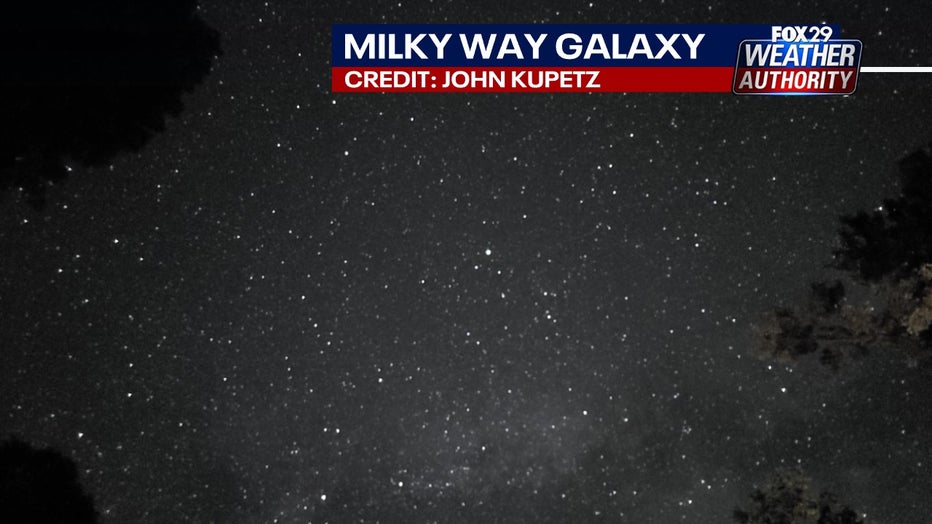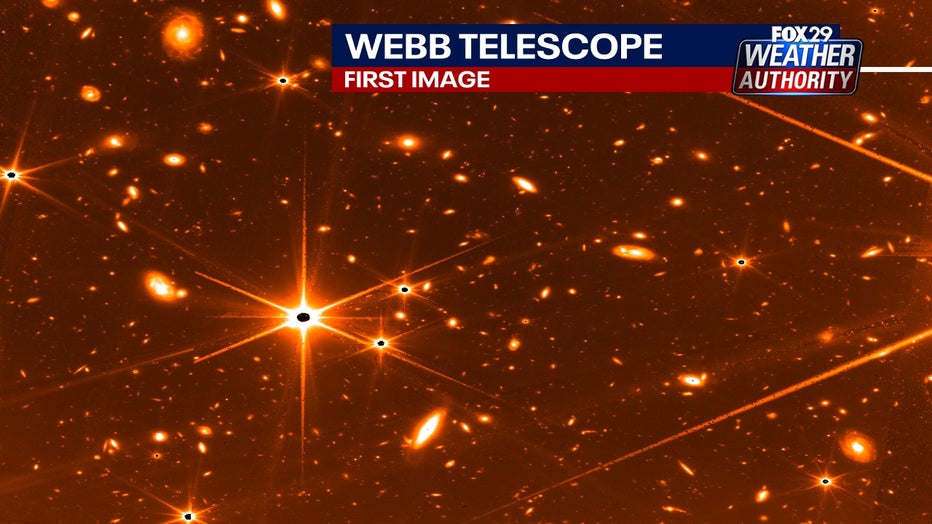NASA and the Webb Telescope will change how we view space
James Webb Telescope to release images from deep space
The James Webb Telescope is set to release images from deep space in a few days.
PHILADELPHIA - On Friday, NASA announced what you'll see next week when the first set of images from the James Webb Space Telescope are released.
Look for an image of a planet outside our solar system. This will be a big planet full of gas that doesn't move around our sun. You'll also see pictures of areas where stars form. These nebulae are clusters of gas, dust, and light.

They'll also release shots of galaxies, which are massive clusters of stars.
We're part of the Milky Way galaxy, and you can see why the Milky Way gets its name if you're somewhere dark enough. Some parts of the Poconos are dark enough to see this milky, fuzzy formation in the night sky.

Milky Way seen from central Pennsylvania. Courtesy John Kupetz. (John Kupetz)
That shot is from central Pennsylvania. That milkiness is actually a dense cluster of stars far, far away. It's so far away, it all sort of blends together as one bright area to our eyes. You can see the Milky Way more clearly from this shot in Yellowstone National Park.

Milky Way as seen from central Pennsylvania. Courtesy John Kupetz. (John Kupetz)
The galaxy images on the way will be the farthest we've ever seen in space because the James Webb Space Telescope lets scientists look deeper into space than ever before.
It's up in space to help us get a deeper understanding of what's actually out in deep outer space. For instance, the telescope will study how stars form, so we can better understand how that all works.
It's also analyzing the light that travels through the air of exoplanets.
Exoplanets are planets outside our solar system. Anything in our solar system orbits our sun, but exoplanets move around their own suns.
The discovery of all these exoplanets is somewhat new. Up until the 1990s, we knew of the planets in our part of space, but since the 1990s, scientists have discovered over 4,000 planets across space, and the Webb Telescope will help us find many more. It'll also tell us what air those planets have.

James Webb Telescope. Courtesy Deanna Kekesi/NASA. (Deanna Kekesi/NASA)
When a planet passes in front of its sun or a star, that starlight will travel through the air on the planet, if it has air.
The air on those planets acts like a prism for the Webb Telescope. Think about a prism from your grade school days: light enters on one side, gets bent, and you see a rainbow of colors on the other side.
Different types of air change how that rainbow looks, and that's what the Webb analyzes. From that, scientists can figure out all the gases making up that planet's air.
Scientists expect to find an exoplanet that has air just like ours--a planet that we could breathe on. So, you'll be hearing a lot more about the Webb Telescope in the years to come.
If you want to learn more about the pictures coming out on Tuesday, July 12, there are free events across New Jersey and Pennsylvania next week celebrating the release.

Image from James Webb Telescope, courtesy of NASA. (Courtesy: NASA)
FOX 29 Meteorologist Drew Anderson plans to be at one of these events in the Lehigh Valley on Wednesday.

